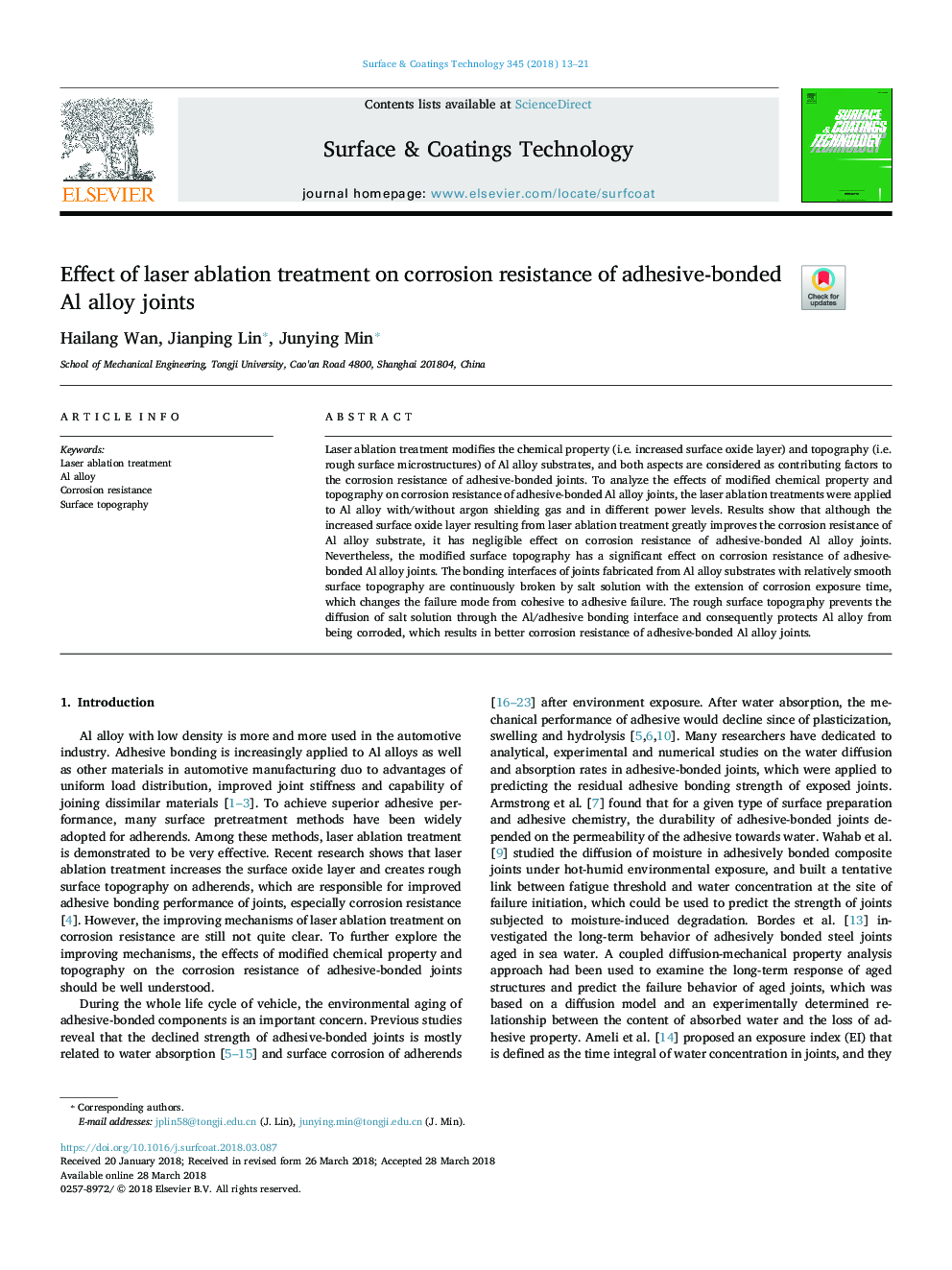| Article ID | Journal | Published Year | Pages | File Type |
|---|---|---|---|---|
| 8023655 | Surface and Coatings Technology | 2018 | 9 Pages |
Abstract
Laser ablation treatment modifies the chemical property (i.e. increased surface oxide layer) and topography (i.e. rough surface microstructures) of Al alloy substrates, and both aspects are considered as contributing factors to the corrosion resistance of adhesive-bonded joints. To analyze the effects of modified chemical property and topography on corrosion resistance of adhesive-bonded Al alloy joints, the laser ablation treatments were applied to Al alloy with/without argon shielding gas and in different power levels. Results show that although the increased surface oxide layer resulting from laser ablation treatment greatly improves the corrosion resistance of Al alloy substrate, it has negligible effect on corrosion resistance of adhesive-bonded Al alloy joints. Nevertheless, the modified surface topography has a significant effect on corrosion resistance of adhesive-bonded Al alloy joints. The bonding interfaces of joints fabricated from Al alloy substrates with relatively smooth surface topography are continuously broken by salt solution with the extension of corrosion exposure time, which changes the failure mode from cohesive to adhesive failure. The rough surface topography prevents the diffusion of salt solution through the Al/adhesive bonding interface and consequently protects Al alloy from being corroded, which results in better corrosion resistance of adhesive-bonded Al alloy joints.
Related Topics
Physical Sciences and Engineering
Materials Science
Nanotechnology
Authors
Hailang Wan, Jianping Lin, Junying Min,
